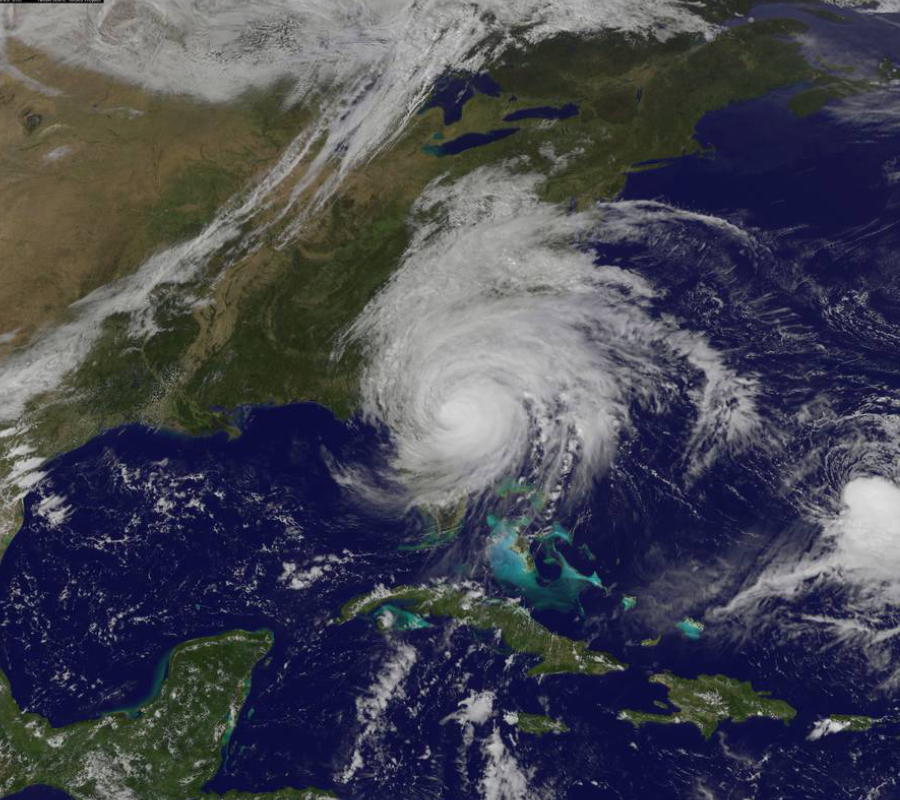NASA said Friday it is flying a Global Hawk drone over Hurricane Matthew to track the storm near Florida’s northeast coast. The drone is being used to capture weather data like temperature, humidity, and air pressure. The Global Hawk drops several devices called drop sondes to gather the required information as they fall from the sky.
The drone weighs about 15,000 pounds. It has a wingspan of 140 feet and it is capable of flying more than 30 hours, reaching over 60.000 feet, according to the U.S. Air Force. The drop sondes it delivers can send weather data on a real-time to the National Hurricane Center in Florida, the National Oceanic and Atmospheric Administration, and other worldwide organizations that forecast weather.

“The drone flight is part of the NOAA’s Sensing Hazards with Operational Unmanned Technology research program for testing whether drones can assist satellites in collecting weather data. NASA said this is the second year of the three-year research project,” reported NASA via Twitter.
The Global Hawk drone
The Northrop Grumman RQ-4 Global Hawk is an unmanned surveillance aircraft, initially designed by Ryan Aeronautical. It performs a similar role as the Lockheed U-2. It has a high-resolution synthetic aperture radar (SAR) and a long-range electro-optical sensor that makes the Global Hawk an ideal device for surveillance.
It is used by the United States Air Force as a high-altitude platform capable of supporting the air forces in worldwide military operations. Each Global Hawk cost around 60.9 million dollars in 2001; however according to data from 2013 it would cost about 222 million dollars to acquire one of them.
Therefore, they are great to collect data about the weather too. The drop sondes fall from the sky with small parachutes that NASA attach to them to prevent them from breaking apart as they hit the ocean or the ground. Now, they are being used to track the advance of Hurricane Matthew as it passes through the United States.
Hurricane Matthew
Hurricane Matthew is currently moving through the southeastern coast of the United States. It originated from a tropical wave that arose in Africa last September 22 but it then developed into a strong storm. It became a hurricane on September 29 as it reached category 5 in intensity in its way through the Caribbean Sea. Then it weakened, staying in the Category 4. It affected Jamaica, Cuba, Dominican Republic and the Bahamas before reaching the United States.
Matthew is expected to weaken after passing through South Carolina, where it is situated currently. It actually was identified as a low-end hurricane on Saturday morning. However, it has left an alarming loss of lives and goods behind it. Matthew has caused at least 889 deaths, most of them occurred in Haiti.

In the aftermath, several charities and international aid organizations have been sending all sorts of help to Haiti, a developing country that hasn’t fully recovered yet from the 2010 earthquake. Action Aid is providing clean water and shelters, World Nation is sending helicopters and is also providing water and sanitation for about 50,000 people. As well, UNICEF has been providing life-saving aid for 10,000 people. The Red Cross has initiated a campaign to collect 9.6 million dollars to provide Haiti with water, shelter, and food.
Seven deaths have been registered in Florida, becoming thus the deadliest hurricane in the Atlantic since Hurricane Stan in 2005, which took the lives of 1600 people. Furthermore, it is estimated a $5 million loss due to Matthew, which makes it one of the most destructive and expensive hurricanes in the U.S.
Matthew damaged NASA facilities
Hurricane Matthew damaged NASA’s rocket launch facilities at Kennedy Space Center (KSC) in Cape Canaveral last Friday as it was going down Florida. Nonetheless, the rockets, spaceships, and crucial equipment appear to be out of harm.
At 9:45 a.m on Friday NASA announced that the Cape Canaveral facilities were affected by the tropical storms. Officials reported a limited roof damage and scattered debris. However, most employees were evacuated.
SpaceX, a private company working alongside NASA said it was “closely monitoring the weather conditions and working with our partners at Kennedy Space Center and Cape Canaveral Air Force Station to safeguard facilities and personnel.”
It is important to consider that though the storm has dramatically weakened in South Carolina, the alerts must remain since more than 15 inches of rain could be expected in the east of the Interstate 95.
“While there is damage to numerous facilities at Kennedy Space Center (KSC), it consists largely of roof damage, window damage, water intrusion, damage to modular buildings and to building siding,” NASA’s Sarah Loff wrote on the space agency website.
Source: Fortune
